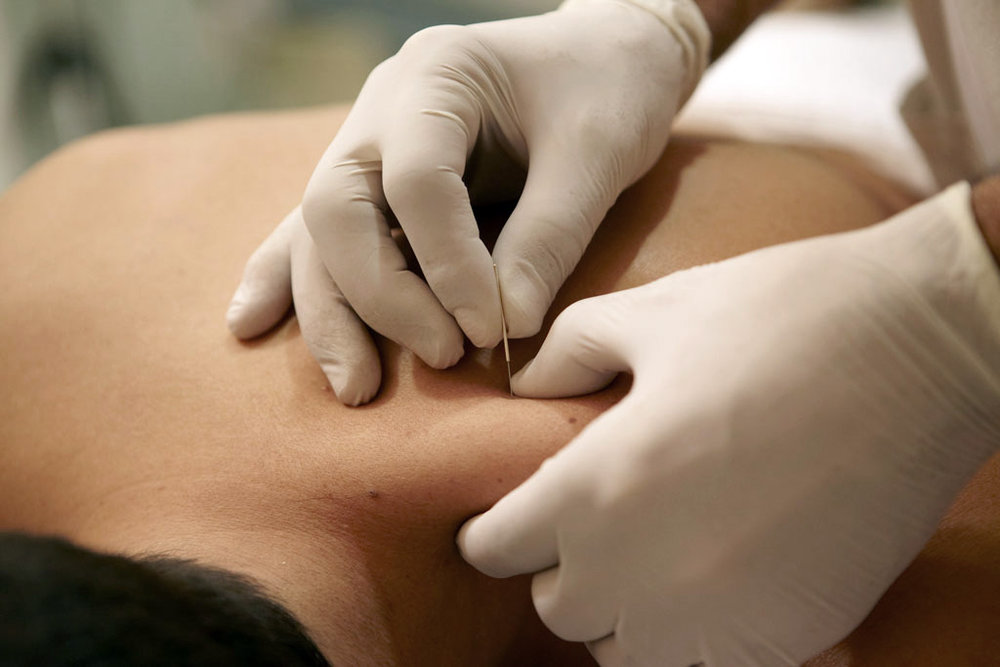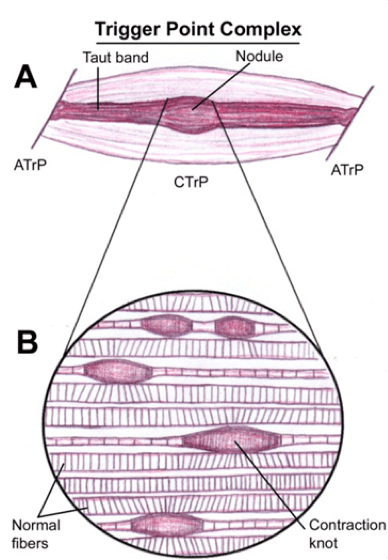
Acupuncture and dry needling, are they the same thing, or two different therapies? Well, it depends on who you ask. Ask an acupuncturist, the answer is yes, they are the same thing. Ask a physical therapist or athletic trainer, and the answer is no, it is very different. As an acupuncturist, I do fall in line with my fellow colleagues. I think that yes, dry needling is a type of acupuncture. But I also see the physical therapists point of view, that dry needling can be successful without any knowledge of qi or meridians.
Lets look at the definitions and a little history of both.
Definition of Dry Needling
According to the American Physical Therapy Association (APTA) dry needling is a:
“skilled intervention that uses a thin filiform needle to penetrate the skin and stimulate underlying myofascial trigger points, muscular, and connective tissues for the management of neuro-musculoskeletal pain and movement impairments.”
We can break that down a little bit, to make it more understandable.
- Filiform means “threadlike” and a thin filiform needle is an acupuncture needle.
- Acupuncture and dry needling both use the very thin acupuncture needles, as opposed to a hypodermic needle that injects “wet” substances.
- Dry needling stimulates trigger points, muscles and connective tissue.

What is a trigger point?
According to the APTA again, a trigger points are:
“hyper-irritable spots within a taut band of contractured skeletal muscle fibers that produce local and/or referred pain when stimulated.”
Basically, a trigger point is what we commonly call ‘knots’ in our muscles. When we press on these knots, it is very tender, and often we can feel pain that radiates to other parts of the body. These trigger points are deactivated through dry needling. This penetration by a needle will illicit a local twitch response in the muscle, and this twitch response is what creates the relaxation of the tissues.
Muscles and connective tissue.
The APTA states that dry needling is used to stimulate not only trigger points, but also muscles and connective tissue. Connective tissue is a very broad term for just about everything else in our body. It includes blood, cartilage, bone, tendons and ligaments, fascia, and adipose tissue. It’s my guess the APTA intends to mean connective tissue only as it applies to the neuro-musculo-skeletal system.
But the APTA states that using dry needling on anything other than trigger points isn’t as well researched by western science. Here is where acupuncture and Asian medical theory can explain it’s efficacy very well, and it uses the concepts of qi, blood, essence and meridians to do so. Most Asian Medicine practitioners rely on thousands of years of trial and error for proof of efficacy, not modern medical research. Though there is actually quite a large amount of scientific research that has been done on acupuncture. It is beyond the scope of this post to go into acupuncture theory, but you can give it a google. You’ll have no problem finding information on how it works, from western biomedical models to classical and traditional East Asian theory.
So, the object of dry needling is to “reduce or restore impairments of body structure and function leading to improved activity and participation.”
Acupuncture and Traditional Asian Medicine
When we talk about the difference between acupuncture and dry needling, the most obvious is the scope of practice. Acupuncture is a complete system of medicine on its own. Not only does it treat pain exceptionally well, it treats everything from colds and flus, gynecological disorders, digestive complaints, heart disease, diabetes and even cancer. The only limit is the skill and experience of the practitioner. Any practitioner of dry needling would never claim they treat any medical conditions other than musculoskeletal and nerve pain disorders. And this is where the argument for a difference in the therapies lies.
But even though every square isn’t a rectangle, every rectangle is a square. You can’t call all acupuncture dry needling, but there is a case that all dry needling is acupuncture.
Ashi points
There is a concept in acupuncture called ashi points. Literally this means “ah yes”, and refers the act of pressing on a tender spot, and the patient says “that’s it, that’s it”. Everybody knows this feeling, and you don’t have to be a massage therapist or doctor to find an ahshi point on another person. Sun Si Mao, a very famous Chinese physician who lived from 581-682 AD, is quoted as saying:

“In terms of the method of ashi, in speaking of a person who has a condition of pain, when squeezing, if there is a spot inside [we] do not ask if it is a [recognised] acupuncture point, because [we] located a painful spot and they said, “Ah yes!”.”
This sounds very similar to the above definition of a trigger point.
The first known documentation of this type of acupuncture point is from the Ling Shu, a canonical acupuncture text written between the 2nd and 1st century BCE. It starts with “it is the point of pain that defines an acupuncture point”, and the treatment technique is described as:
“apply rapid insertion and withdrawal …of the needle, and cease when the puncturing begins to effect a cure, irrespective of the period of treatment. Insert the needles into the tender spots on the diseased area. “
This technique is a great description of dry needling as well. Find the tender nodule, insert the needle into the nodule, and rapidly insert and withdraw the needle until the painful nodule is no longer present.
Why Choose an Acupuncturist to do Acupuncture and Dry Needling
There are many advantages to having an acupuncturist perform dry needling. The physical therapists and athletic trainers definitely have an excellent knowledge of anatomy. But there is no comparison with the experience an acupuncturist has with needles. Proper insertion of a tiny needle into a body involves a lot of subtlety. The qi of the practitioner is just as important as that of the patient. A good acupuncturist spends a lot of time creating their own healthy qi. This creates a refinement in the acupuncturists ability. This refinement, whether it’s dry needling or acupuncture, will maximize effectiveness and safety.
The acupuncturist also has extensive knowledge of how to affect meridians and body systems with acupuncture needles. Many more layers of disease are addressed, at the same time dry needling is performed. Ideas such as dryness of the muscle tissue, qi and blood stagnation and deficiency may be causative factors of painful trigger points. Both trigger points and the underlying cause are addressed when an acupuncturist performs dry needling.